- Administrator
- Albums and Singles

This is the first album that I have encountered from Jo Zimmermann's long-running and amusingly titled Schlammpeitziger project (the unwieldy pseudonym is borrowed from a fish that apparently breathes through its anus). The general lack of Schlammpeitziger in my life before now is mostly because the bulk of his oeuvre has been released exclusively on German labels, aside from a retrospective of his early years released on Domino back in 2001. I am delighted that he has finally crossed my path though, as I am endlessly fascinated by outliers and iconoclasts and Zimmermann is a prime specimen. He is also a bit of an erratic pop genius, albeit a gleefully absurd and sometimes self-defeating one. At its best, Damenbartblick is a glimpse of what a slightly tipsy Kraftwerk might have sounded like if they were joined by Steven Stapleton in an extremely whimsical mood. Regrettably, Zimmermann only rarely reaches such heights, but they are wonderful while they last (and the remainder of the album is a pleasant enough batch of bubbly synth-pop instrumentals).
I was not sure what to expect from this album, so I was completely blindsided by the opening "Ekirlu Kong," a bombshell that captures Zimmermann at the absolute height of his powers.It begins with an almost cartoonishly gurgling bass line and a host of jabbering animal noises, but almost immediately coheres into a wonderfully burbling and hook-filled masterclass in idiosyncratic electronic pop.While Zimmermann makes it all seem effortless, the layered complexity is dazzling to behold, as he deftly juggles synths of several different (and delightful) textures while casually tossing off one great melodic hook after another.Also of note, "Ekirlu Kong" is one of the few songs where Zimmermann decided to "sing," which adds a whole new level of appeal, as his droll, deadpan monologue oozes equal parts snarky charisma and wrong-headed derangement.At its core, "Ekirlu Kong" is a charmingly bubbly and sweet love song, but that is not the complete picture, as it is wryly undercut by the perverse absurdity of lines like "your farts smell like the breath of a rainbow unicorn."On paper, that admittedly sounds somewhat infantile and needlessly scatological, but works beautifully in context, injecting some charming subversion into Zimmermann’s gorgeous pop confection.Lamentably, Damenbartblick never quite reaches that level ever again, though the later and considerably more hostile "Angerrestbay" happily comes somewhat close ("Hey stupid man–your brain is a dick").The rest of the lyrics are similarly provocative/ridiculous, of course, but the strangely rolling, dragging groove and funky clean guitars make for another fun and winning formula.
Consequently, I dearly wish Zimmermann sang more on the album, as his vocals are one of the magic ingredients that makes Damenbartblick something to get excited about: it is like an especially smart, funny, and precocious friend made a party album that deliberately mistranslated many lines into amusingly awkward and baffling pronouncements ("You got a perfect health care system–I got 18 seagulls flying in circles in my room").As entertaining as that impish piss-takery can be, it would probably get old quickly if Zimmermann were not also something of a synth wunderkind/studio wizard.The latter probably explains why so few of these songs feel like the fully formed synth-pop gems they could be, though Zimmermann is probably also reluctant to wear out the welcome of his limited vocal talents.Given that this is a one-man endeavor, it must take an enormous amount of time to tweak something like "Ekirlu Kong" to glistening perfection, so trying to conjure up an entire album in that vein would probably grind Schlammpeitziger's output to a standstill for a couple of years.No one wants that.I am also curious about who the expected audience for Schlammpeitziger might be, as it is entirely possible that Zimmermann is largely content just making skillful, upbeat Kraftwerk pastiches, but also likes to throw in a few curveballs every now and then to amuse himself.If that is the case, I guess I just love the curveballs.More objectively, however, the instrumental pieces that comprise the bulk of the album lack the character of the vocal ones: they are pleasantly likable rather than great.I do not have any particular aversion to instrumentals, but there is nothing to fill the charisma void left by the disappearance of Schlammpeitziger's human element (more animal noises would be a good start, incidentally).
Of course, I bet I would appreciate Zimmermann’s instrumentals much more if my vague expectations had not been completely blown to pieces by such a stellar opener.Consequently, it seems unfair to say that this is a flawed album, as any grumbling feels like the whining of a spoiled child.The best analogy that I can come up with for Damenbartblick is that it is like an enchanted vending machine that unexpectedly gave me a freshly prepared dish of great chicken tikka masala rather than, say, a candy bar.On one level, it would be disappointing if most of the time it reverted back to giving me the expected result, but the more significant bit is that something truly amazing happens every now and then.In fact, that is the perfect summation of Schlammpeitziger: something truly amazing happens every now and then, so I would be a fool not to wait around to see what happens next.I suppose that makes Zimmermann more of a "singles artist" rather than an "album artist," but he is at least a damn great one: Schlammpeitziger has my unwavering attention now.
 
Read More
- Administrator
- Albums and Singles
 Released back in early 2017, Frequency is the underheard debut full-length from the duo of Coil/Cyclobe alum Mike York and Mark Pilkington (from Strange Attractor Press). Given that singular and occult-tinged pedigree, it is no surprise that something novel and wonderful emerged from their union. I suppose Coil’s more hallucinatory and amorphous late-period work is a solid touchstone, but it is also a mere jumping-off point, as Teleplasmiste descend even deeper into lysergic drone territory. At its best, Frequency is like a psychoactive depth charge dropped straight into my unconscious, exploding into a disorienting and almost vertigo-inducing swirl of colors and texture. While some of these swirling, smearing, and buzzing synth invocations admittedly strike deeper than others, the album as a whole is a tour de force of hypnotic, slow-burning, and reality-dissolving wave- and frequency-manipulation.
Released back in early 2017, Frequency is the underheard debut full-length from the duo of Coil/Cyclobe alum Mike York and Mark Pilkington (from Strange Attractor Press). Given that singular and occult-tinged pedigree, it is no surprise that something novel and wonderful emerged from their union. I suppose Coil’s more hallucinatory and amorphous late-period work is a solid touchstone, but it is also a mere jumping-off point, as Teleplasmiste descend even deeper into lysergic drone territory. At its best, Frequency is like a psychoactive depth charge dropped straight into my unconscious, exploding into a disorienting and almost vertigo-inducing swirl of colors and texture. While some of these swirling, smearing, and buzzing synth invocations admittedly strike deeper than others, the album as a whole is a tour de force of hypnotic, slow-burning, and reality-dissolving wave- and frequency-manipulation.
In many respects, the opening "A Gift of Unknown Things" is the perfect and representative harbinger of the droning psychedelia to come, as it is built from densely buzzing and sustained synth tones that slowly swoop, swell, and oscillate in a sustained reverie.Gradually, a strangely hollow and plinking percussion motif appears, but the piece does not feel like an evolving composition so much as it feels like I was dropped in the middle of a strange and disconcerting sound world that eventually grows more complex texturally.It is not quite a brilliant enough illusion to fully transcend its likely improvisatory origins, but it is still an appealingly immersive and phantasmagoric place to linger.Later, "Mind at Large" returns to roughly the same territory, though it casts a deeper spell, as the central motif is embellished by a wonderfully queasy and gently fluttering periphery of blurred tones and buried subterranean plunges.That "densely buzzing and slowly swooping drones" template is reprised once more in the epic "Radioclast," albeit this time with an undulating undercurrent of feedback/harmonic-like ripples. I like all three pieces, but they are all very much cut from the same cloth and do not do much to establish Teleplasmiste as a unique and formidable entity.Given the intriguing body of work that both artists have behind them, I was hoping that Frequency would be more than just an atypically strong synth album that draws upon some especially cool influences.The pieces mentioned above admittedly are a bit more than that, as they creep into deep trance/altered state territory, but they are not quite the visionary break from the current synth milieu that was expecting.
Thankfully, that visionary break comes elsewhere on the album, as "Gravity is the Enemy" succeeds admirably in realizing the duo's stated objective of "blurring vintage synthesis and contemporary electronics with acoustic pipes to create a transcendent reverie that exists on a wavelength beyond both retro fetishism and modern-day machinations."At its foundation, it shares a densely throbbing bed of synth drones with everything else on the album, yet that is merely the framework, as York unleashes a sinisterly dissonant maelstrom of gnarled pipes over it to harrowing effect.There is also an added textural layer of odd crashes and hollow drips that imbues the piece with an otherworldly sense of place.I feel like I am about to be a human sacrifice for some kind of malevolent ancient ritual in Teleplasmiste’s time-traveling trance cave, which is definitely not a sensation I can get elsewhere.That is unquestionably the album's zenith as far as establishing a mesmerizing new niche is concerned, yet the following "Astodaan" is no less stunning.This time, however, the achievement is more of a compositional one, as the swirling haze of shimmering heaven in the periphery creates the feeling of an evolving chord progression quite different from the usual floating stasis.That is not the only innovation, however, as the central drones take on a far more visceral and snarling character and it is absolutely glorious.It also nicely illustrates the difference between a good Teleplasmiste song and a great one: one sneaks its tendrils into my consciousness and pulls me towards some kind of blurry and alien dream state and the other does that AND hits me on primal, seismic level.
The album is curiously rounded out by "Fall of the Yak Man," a haunting earlier piece that diverges significantly from the rest of the album in a couple of key ways (it has a melody and it lacks a heavy drone backbone). It has an ageless and elemental menace to it that I rather enjoy, but I think York and Pilkington’s intuitive move away from such composed-sounding fare was ultimately a good decision: Teleplasmiste are at their best when they erase all trace of themselves and just set about trying to dissolve mundane reality.Some pieces admittedly succeed more than others, but that is to be expected: York and Pilkington are like two necromancers trying to find the runes that will summon exactly the demon that they want–sometimes they do not get the ideal result, but that is because they are trying to do something that no one else can do in largely uncharted territory.That said, this is still a fine and absorbing album by any standard.Still, I am hoping that this is just a formative first step and that York and Pilkington will keep traveling this arcane path, as "Gravity" and "Astodaan" lay the groundwork for a second phase that could (and should) put Teleplasmiste on the same level as York’s iconic previous projects.
 
Read More
- Administrator
- Albums and Singles
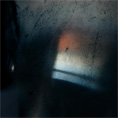
Snapshots of an abandoned city. Fragments of song drifting out of basements and across alleyways, muffled conversations. Scrutinized, the "music" disappears – maybe paracusia? Brass Orchids, Anne Guthrie’s second full-length album for Students of Decay, is an entrancing collage of new and old sounds drawn from a variety of beguiling sources. Posthumous contributions from the artist’' grandfather, a jazz pianist; obsolete media palimpsests (some vanity, some necessity); tap dancing on a peeling floor… An unsettling and strangely beautiful album – akin to something on the tip of your tongue, which, before you can name it, slips away into forgetting.
Out 3/23/18 on Students of Decay.
Read More
- Creaig Dunton
- Albums and Singles
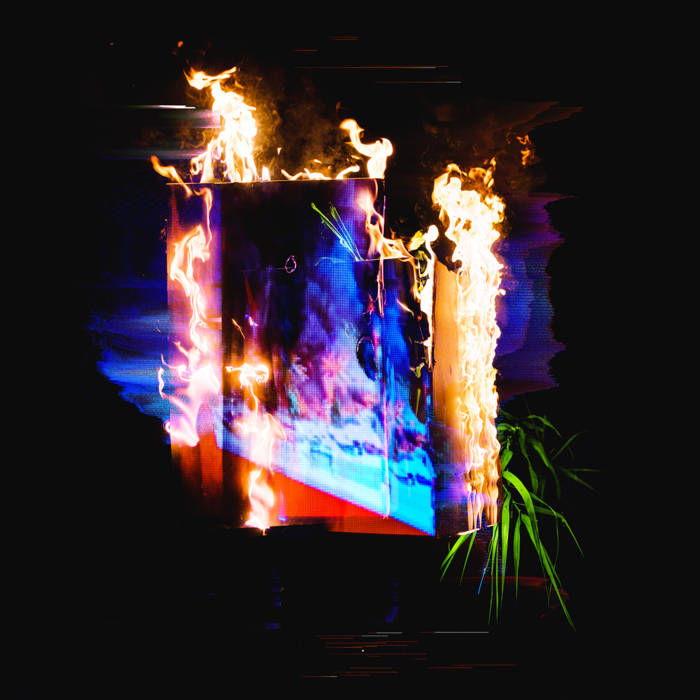
Brainwashed and Holodeck Recordings are proud to premiere "Fandeath," from Austin, Texas duo LACHANE’s self-titled debut. "Fandeath" captures the debut’s slow, lurching pace punctuated with heavy, industrial strength beats, rich synthesizers, and sinister guitars. Vocalist and producer Melissa Cha's beautiful vocals glide through the funereal backing track as guitarist Ryan Garl delivers a wonderfully distorted performance that adds just the right amount of organic grime to the complex electronic arrangements.
The self-titled debut LACHANE will be released on cassette and digital on Friday, February 9th.
Pre-orders are available at holodeckrecords.com now.
Read More
- Administrator
- Albums and Singles
 For their fourth album in a relatively short timespan, the Norwegian group (now a five piece) have produced their first fully improvised work, and it is a strange one. Besides the fact that the concept here is mostly just thematic, compared to the more composition-based ideas they have used on previous albums, the performances are bizarre and impossible to classify, sounding like nothing else they have done, and the record is all the stronger for it.
For their fourth album in a relatively short timespan, the Norwegian group (now a five piece) have produced their first fully improvised work, and it is a strange one. Besides the fact that the concept here is mostly just thematic, compared to the more composition-based ideas they have used on previous albums, the performances are bizarre and impossible to classify, sounding like nothing else they have done, and the record is all the stronger for it.
The theme is generations, of course, and the album is broken into five pieces reflecting the classifications of generations that historians have agreed upon.Playing with the idea of generations and how each is defined by its rudeness and perceived lack of respect to the one that preceded it, each subsequent piece here is longer, more commanding, and at times more abrasive.De facto leader Christian Meaas Svendsen’s bass is rarely a rhythmic instrument, Andreas Wildhagen's drums are more of a textural element, Adrian Løseth Waade's violin is usually a source of dissonant string scrapes, and new member Agnes Hvizdalek vocalizes more than sings.Other than the piano of Ayumi Tanaka, much of this album can be summarized as people playing their instruments incorrectly, which is an asset more than it is a liability.
Opening "The Lucky Few" lingers near silence for much of its duration.Indecipherable ambient noise is present, but hushed, and it is not until its closing minutes that the overt percussive knock from Wildhagen or sharp note from Waade, Tanaka, or Svendsen cuts through to make it clear that there are actual instruments being played.Once "Baby Boomers" begins, the noises are somewhat more up front, but still extremely bizarre.Skittering sounds, the occasional thud, chirp, or scraped string comes to the front, but never fully gels.During the few moments where the instrumentation is a bit more obvious, the final product sounds more like a jazz combo doing their take on the short lived glitch/lowercase music scene.
"Gen X" features a bit more conventionally played instrumentation as well, but used to generate low, menacing drones in contrast to anything more traditional sounding.There is more of a jazz feel to the piece, but it is riddled with tension and discomfort.Hvizdalek’s vocal improvisations vacillate from subtle to overt, keeping things quite off-kilter, with the only perceptibly conventional touchstone being Tanaka’s piano."Millienials" is more rhythmic, with Wildhagen leading the way from sputtering, clattering rhythms and eventually some sharp, sustained cymbal passages.Again, only the piano is immediately perceptible, and the quality of the recording is exceptional, capturing sounds that are almost alien despite their normal sources.
The concluding "Plurals" closes the album on an especially high note.Sputtering noises and scrapes are abundant, peppered with the occasional cricket-like chirp or rattling rhythm.Every once in awhile an obvious bit of voice, twanging bass string, or sharp drum hit will forcefully appear in the mix, then otherwise retreat into the weird mess of sound.At times the piece builds to some heavy, wonderfully pounding rhythmic outbursts, but overall it seems to build to a crescendo that never actually occurs.
With talk about how subsequent generations are rude and disrespectful to the ones that preceded them, I can hear Nakama engaging in a bit of playfulness to that end on Worst Generation.Namely, their approach to jazz (and music in general, really) completely abandons notions of tradition or structure, but in doing so they are carving out their own niche, and a strong one at that.Even without beard-stroking conceptual composition tactics, this album shows they can make excellent, if occasionally quite baffling, purely improvised music.
samples:
 
Read More
- Administrator
- Albums and Singles
 Billed as Skelton's most ambitious composition to date, Towards a Frontier is a 66-minute epic that is part of larger multimedia project assembled during three trips to rural East Iceland. Characteristically, this is an album very much shaped by the natural environment that Skelton was immersed in as this piece was gradually conjured into being. More specifically, Towards a Frontier draws its primary inspiration from the changing seasons as experienced from an Icelandic mountain range. While less instantly gratifying than some of Skelton's other recent works, this album has a masterfully paced slow-burning majesty and mesmerizing elemental power that gradually reveals itself with repeated, attentive listens. Notably, nature does not seem particularly benign here, but Skelton keeps the mood intriguingly ambiguous as the piece unfolds, hinting at the primal, cosmic horror of our insignificance while simultaneously evoking something akin to religious ecstasy.
Billed as Skelton's most ambitious composition to date, Towards a Frontier is a 66-minute epic that is part of larger multimedia project assembled during three trips to rural East Iceland. Characteristically, this is an album very much shaped by the natural environment that Skelton was immersed in as this piece was gradually conjured into being. More specifically, Towards a Frontier draws its primary inspiration from the changing seasons as experienced from an Icelandic mountain range. While less instantly gratifying than some of Skelton's other recent works, this album has a masterfully paced slow-burning majesty and mesmerizing elemental power that gradually reveals itself with repeated, attentive listens. Notably, nature does not seem particularly benign here, but Skelton keeps the mood intriguingly ambiguous as the piece unfolds, hinting at the primal, cosmic horror of our insignificance while simultaneously evoking something akin to religious ecstasy.
The epic scope of Towards a Frontier unexpectedly took me some time to get fully acclimated to, as it seems to unfold at a glacial pace more akin to a geological time scale rather a human one.For example, it takes roughly two minutes before the slowly swelling and blurry drones finally cohere into form (in this case, the languorously see-sawing pulse of an endlessly repeating two-chord progression).If listened to casually, it initially feels like Skelton is on autopilot and is simply treading water with his melancholy string swells.If I pay closer attention, however, it become immediately apparent that there is considerably more happening, as the two chords gradually start to bleed into one another and the underlying thrum steadily darkens and grows more menacing.In fact, much of the brilliance of this piece lies in how imperceptibly Skelton changes the mood and amasses increasingly complex and dissonantly oscillating harmonies: the snowballing power builds so subtly that it is impossible to pinpoint the moment where Frontier stops feeling like business as usual and starts feeling transcendently heavy and mesmerizing.What was initially a distinct and constant pulse sneakily becomes something quite different altogether: a distended and slowly churning simmer.Even the crests of the initial chord progression begin to submerge at a certain point, leaving a tense and murky river of mingled drones that gradually births a bleakly elegiac melody of sorts.
That feat of production prestidigitation alone would be enough to make Frontier a compelling and distinctive addition to Skelton’s sprawling discography, but the piece unexpectedly breaks open into a whole new vista around the halfway point, as Skelton's shivering melodic swells begin to overlap and intertwine to cast a spell of quivering, epic melancholy.Soon afterwards, an even more dramatic transformation occurs and the contrast between the various textures intensifies: the droning backdrop takes on a harsh, almost icy tone while the strings become deeply groaning and immediate, like they stopped being a bleak abstraction and suddenly became an actual human somberly bowing a double-bass just a few feet away from me.That is the point where Towards a Frontier makes the leap into something truly magical, as the cold washes of sound begin to swirl together with moaning bass swells and a warm haze of flute-like tones. Once reaching such a lushly immersive heaven of rich textures, complex harmonies, and heavy pulses, Skelton wisely decided to stick around: this section is Frontier's big centerpiece and would be a wonderful place to linger indefinitely.Eventually, however, the piece moves on, revealing that Skelton improbably had yet one more trick remaining up his sleeve.I suspect this begins the "spring" portion of the seasonal voyage, as the piece takes on a somewhat brighter tone, albeit one disrupted by some surprisingly harsh and howling crescendos.
Curiously, there is also a pointillist motif of brass (or woodwind) whimpers and pulses, which takes the piece's final act into quite an unexpected place indeed.In fact, it sounds a lot like one of Philip Glass’s Errol Morris soundtracks (Fog of War?), albeit slowed waaaaay down and torn apart with viscerally grinding snarls (nature, unlike Philip Glass, is not mannered and meticulously ordered).It is different enough to not feel at all derivative, yet similar enough to feel like Skelton has repurposed the modern classical aesthetic into something more primal, physical, and raw.That crescendo is probably the most radical and striking passage in Towards a Frontier, as well as a fascinating convergence of some of Skeltons many guises.In fact, the entire piece feels like a seamless and unhurried trip through much of his recent evolution, touching on deep drones, vibrant bowed acoustic strings, heaving displays of immense elemental power, and soundtrack-like gradual shifts in mood and atmosphere.
If Towards a Frontier has a weakness, it is only that the first third seems deceptively uneventful as Skelton slowly and quietly sets the stage for the piece to blossom into epic and achingly beautiful full bloom.As a result, this album asks a bit more patience and sustained attention from listeners than much of Skelton's other work, but the long, slow build makes the sustained pay-off feel both well-earned and hugely satisfying–this album could have taken no other shape.To my ears, Towards the Frontier is easily one of the more essential releases in Skelton’s oft-stellar canon, as it is both a unique entry compositionally and a wonderfully substantial, powerful, and absorbing tour de force.This feels like the sort of album that an ascetic hermit would obsessively compose (or, more likely, channel) over a frantic, sleepless week after witnessing the face of God in the clouds (presumably dying from exhaustion/rapturous joy seconds after recording the final note).
Samples:
 
 
Read More
- Administrator
- Albums and Singles
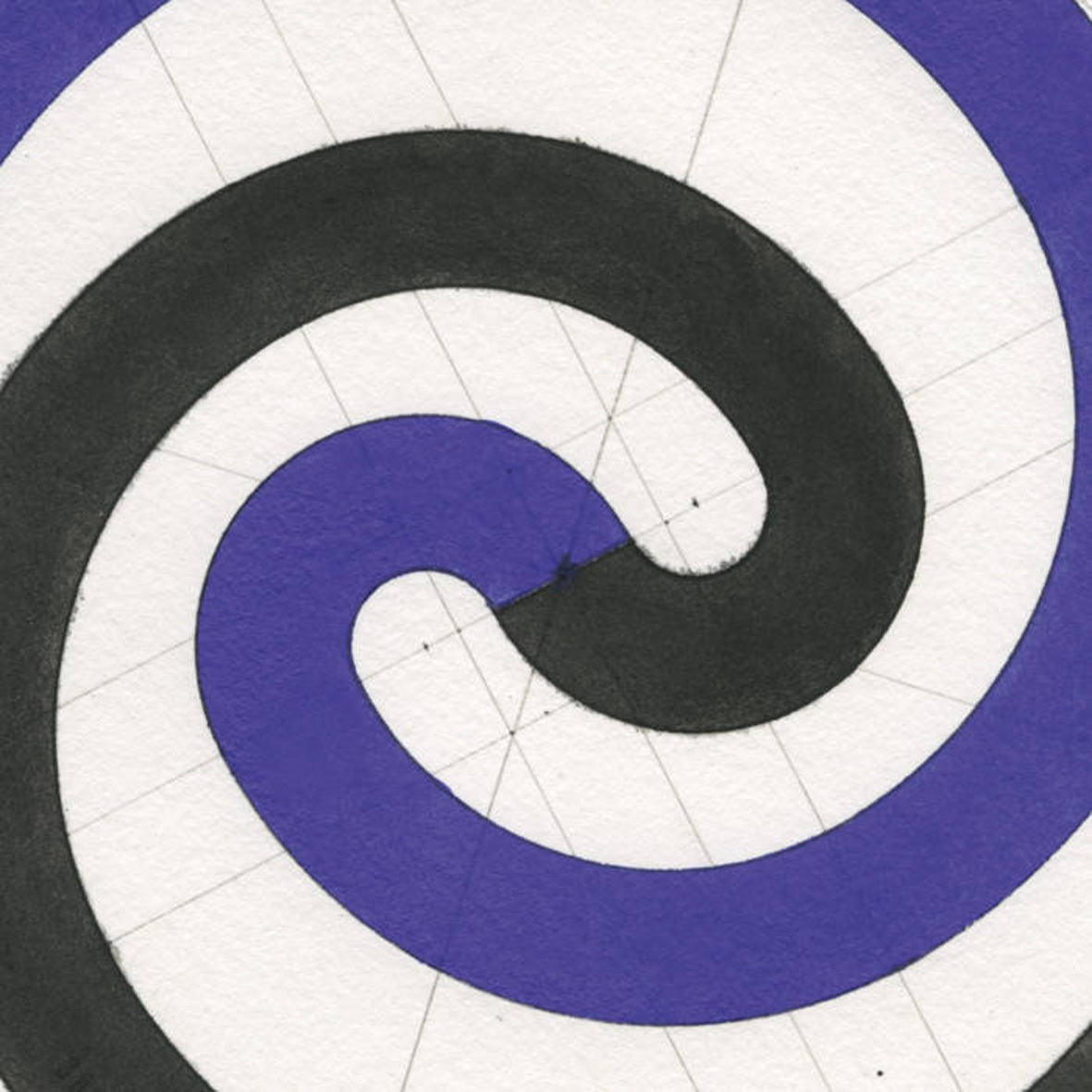 The wonderfully unsettling and playfully creepy The Gag File deservedly got a lot of attention last year, but Aaron Dilloway also quietly released another excellent album on a small Dutch label in the late fall. While less audacious and considerably less intent on evoking some kind of sad, wobbly, and hissing nightmare world, Switches is still a wonderfully bizarre, distinctive, and obsessive-sounding album. In fact, the sickly, frayed, and hypnotic locked groove-style loops of Switches almost feel like a perverse prelude to The Gag File, relentlessly repeating gnarled and disorienting snatches of half-melodies to peel away the last vestiges of sanity to prime me for the malevolent and Ligotti-esque funhouse to come.
The wonderfully unsettling and playfully creepy The Gag File deservedly got a lot of attention last year, but Aaron Dilloway also quietly released another excellent album on a small Dutch label in the late fall. While less audacious and considerably less intent on evoking some kind of sad, wobbly, and hissing nightmare world, Switches is still a wonderfully bizarre, distinctive, and obsessive-sounding album. In fact, the sickly, frayed, and hypnotic locked groove-style loops of Switches almost feel like a perverse prelude to The Gag File, relentlessly repeating gnarled and disorienting snatches of half-melodies to peel away the last vestiges of sanity to prime me for the malevolent and Ligotti-esque funhouse to come.
The opening piece, "Switch 2," sets a very clear tone for the album: for the most part, Switches is a very cryptic, inhuman, and "industrial" affair, resembling the work of a battery of squelching and clanking machines.There is a quite a bit of variety and character to be found in Dilloway's mechanized lunacy, however."Switch 2," for example, sounds like a pile-up of manically repeating tape loops of loudly sputtering belts and pulsing presses.There are a number of layers to Dilloway’s artistry, however, as Switches is far more than some ingeniously collaged field recordings, as tapes have an unwavering tendency to wind up considerably more erratic, jabbering, and ragged-sounding than they did before Aaron got his hands on them.In this case, for example, Dilloway evokes a factory where all the rusted, weary, and struggling machinery unexpectedly wrests itself from its moorings and turns on the workers.The following "Switch 17," however, is considerably less abrasive and hostile, unfolding as an endlessly repeating snatch of echoing backwards melody.That motif certainly has an appealingly eerie beauty, but that is only part of the picture, as Dilloway devotes most of his energies to the textures: it sounds like a skipping record being played through a malfunctioning receiver and blown-out speakers.The first side of the album is closed out with the starker and more percussive "Switch 15," a throbbing and pummeling rhythmic miasma of hollow pulses and visceral, distorted snarls.The overarching theme throughout the entire side is that of tape loop experimentation gone sick and wrong, albeit in a unexpectedly listenable way.I suspect no one picks up an Aaron Dilloway album in search of haunting piano melodies, but they turn up here anyway.
The second half of album keeps the rhythmic momentum going, yet takes it in a more somewhat more playful direction…at first.The lengthy "Switch 11-12" initially opens with a surprisingly light pinging and skipping "locked groove" motif, but it slowly becomes increasingly bolstered with mechanized heft and winds up as a shuddering and crunching juggernaut that moves tirelessly forward like a tank.It is hard to say exactly when "Switch 11" segues into "Switch 12," yet the piece gradually takes on the visceral and vaguely hostile feel of a power electronics performance, as a dense mass of oscillating machine noise takes over and Dilloway occasionally delves into reverberating metal percussion and something resembling distorted vocal howls.That show of force proves to be ephemeral though, as the bulk of the piece is devoted primarily to making subtle shifts in the massive, shuddering industrial rhythm (as well as some not so subtle ones).Basically, Dilloway treats a cacophony of looped machine noise like a techno producer would juggle high-hats and kick drums in a bangin’ new party jam (only Dilloway is not trying to fill a dancefloor so much as he is intend on finding new ways to grind and lurch).The album comes to an uncharacteristically melodic close with the piano-based "Switch 1," which beautifully blurs together a looping harp-like arpeggio with backwards bass tones to weave something weirdly hypnotic and phantasmal.It feels like I am watching a flickering scene from a '50s horror movie (most likely one featuring a haunted castle or a haunted island), yet the projector has gotten stuck and the image is endlessly skipping and starting to burn.By the end, the piece has deteriorated into utter unrecognizability, which is the only appropriate way for this album to end: a slow fade of gnarled, sickly sounding reels played on a dying machine that is increasingly unable to maintain even a semblance of the right speed.
Naturally, any album assembled from distressed and wiggly snatches of tape is destined to have a constrained palette, which is probably the sole caveat here: Dilloway's vision is undeniably driven by his choice of tools.I personally do not consider that a problem at all, as Dilloway has constrained himself quite squarely in my (dis)comfort zone.As far as tape loop-based experimentation is concerned, Dilloway's recent work is easily among the most entertaining and inventive fare that I have heard.Also, obsessively repeated looping patterns are exactly the sort of thing that I am drawn to like a moth.There are a number of folks that have made stellar work in that vein (Jason Lescalleet, William Basinski, The Loop Orchestra, Tape Loop Orchestra, etc.) and they all bring something unique to it.Dilloway's uniqueness lies in his deeply and intuitively deviant sensibility: this is arguably noise, but it is much more absorbing and fun than noise tends to be.An appreciation for the finer points of ugliness, decay, and black humor are such a fundamental part of Dilloway’s character that he can eschew raw power entirely and dwell instead on nuance and atmosphere without losing any bite.Switches is not a threat to unseat The Gag File as Dilloway’s definitive artistic statement of the year, but that is only because its lacks the gleefully macabre thematic hook of its predecessor.Viewed solely on the strength of the material, Switches is almost every bit as essential.
 
Read More
- Administrator
- Albums and Singles
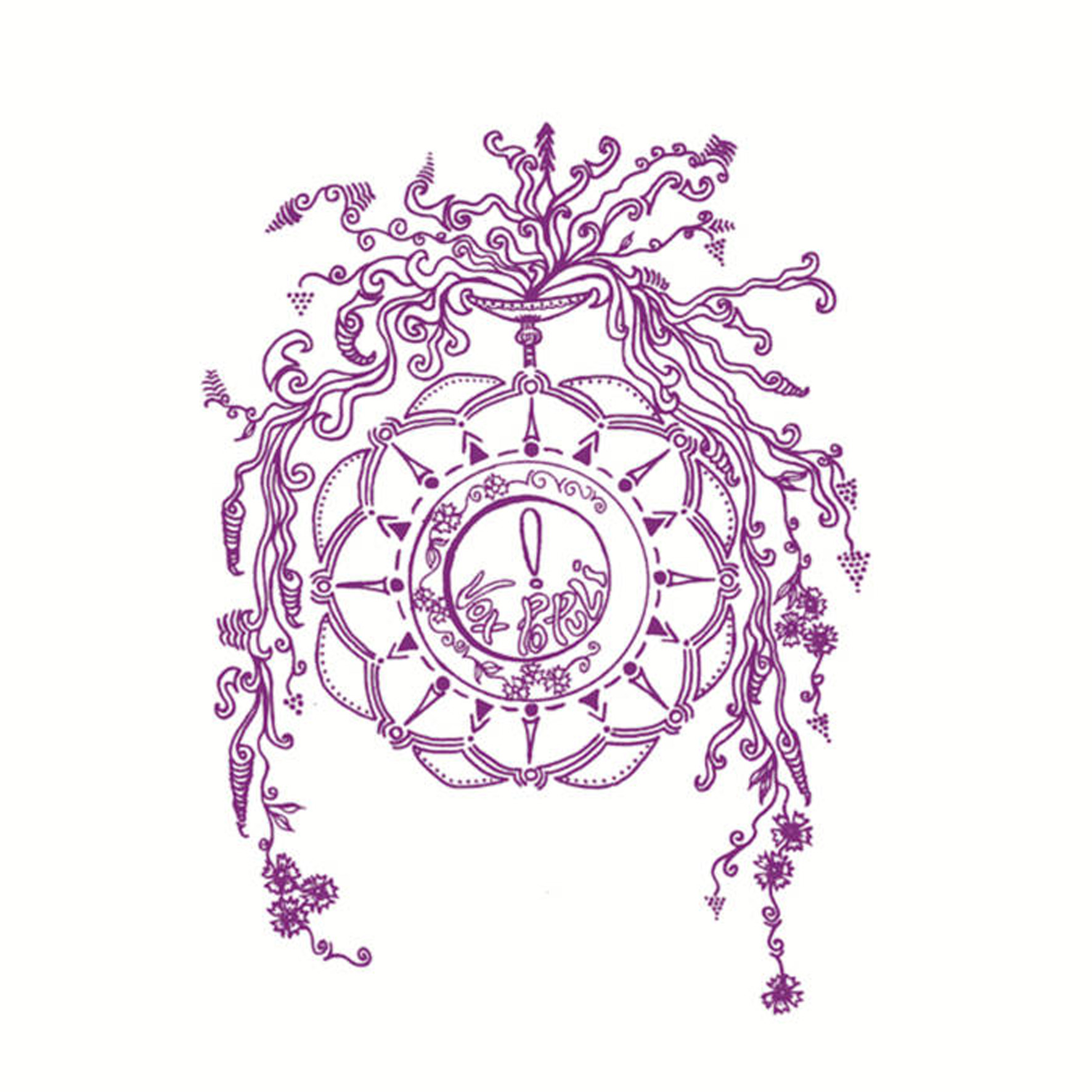 Ever since their cult favorite Half Dead Ganja Music album was reissued back in 2013, I have been fascinated by this deeply unusual "ethno-industrial" duo from France and have done a decent amount of digging to track down the rest of their back catalog. That has proven to be a somewhat convoluted task, leading to lots of dead blog links as well as a few wonderful unofficial compilations. In fact, several of the best songs on this new digital-only collection have appeared on those unofficial releases, while some others appear to have come from an untitled 1988 tape. Curiously, a lot of these experiments spanning 1984 to 1989 are just as good as anything that appeared on Vox Populi's formal albums (in some cases, even better), making this kind of a crucial bit of underground industrial archeology on Emotional Rescue's part. I suppose motivated or frugal listeners can probably find a lot of these songs elsewhere if they put their minds to it, but this is an extremely well-curated collection that provides an excellent introduction to one of the most creative, cool, and underappreciated bands of the '80s cassette underground.
Ever since their cult favorite Half Dead Ganja Music album was reissued back in 2013, I have been fascinated by this deeply unusual "ethno-industrial" duo from France and have done a decent amount of digging to track down the rest of their back catalog. That has proven to be a somewhat convoluted task, leading to lots of dead blog links as well as a few wonderful unofficial compilations. In fact, several of the best songs on this new digital-only collection have appeared on those unofficial releases, while some others appear to have come from an untitled 1988 tape. Curiously, a lot of these experiments spanning 1984 to 1989 are just as good as anything that appeared on Vox Populi's formal albums (in some cases, even better), making this kind of a crucial bit of underground industrial archeology on Emotional Rescue's part. I suppose motivated or frugal listeners can probably find a lot of these songs elsewhere if they put their minds to it, but this is an extremely well-curated collection that provides an excellent introduction to one of the most creative, cool, and underappreciated bands of the '80s cassette underground.
As with all Vox Populi! releases, the songs compiled on Magiques Créations predominantly feature the core duo of multi-instrumentalist Axel Kyrou and vocalist Mithra Khalatbary, but trying to figure out much beyond that is probably a doomed task (the untitled cassette, for example, credited a third member namedFRG MAN and Axel himself appeared as GNOUF TAP).It is probably safe to say several of the usual contributors from this era turned up though, such as Mithra's percussionist brother Arash and Pacific 231's Pierre Jolivet.Additionally, it is similarly hard to tell if this is entirely a studio recording, as several VP releases are mixtures of studio and live work.For the most part, however, Magiques Créations at least feels entirely like a studio creation–it is certainly somewhat lo-fi at times, but there are a lot of subtle and hallucinatory effects swirling around the periphery that probably would have been lost in a live setting.In any case, the loose thread that ostensibly holds these otherwise unconnected pieces together is that they chronicle the band's progression towards 1989's Aither, which Emotion Rescue has previously reissued and regard as a high-water mark of sorts.This collection makes a lot of sense in that context, as there is an increased emphasis on grooves and hooks that was mostly lacking from 1987's murkier, more atmospheric, and ritualistic-sounding Ganja Music.That said, most of these songs still sound a hell of a lot more like Ganja Music than the cleaner and more conventionally poppy Aither.The difference is subtle, but Magiques Créations still sounds like an experimental/industrial project with an unexpected talent for hooks and melody, while Aither sounds like an unusual internationalist pop group with some lingering sharp edges.Also, the palette here is generally still an endearingly primitive one, as the opening "Joue Joue" is just a few wobbly organ chords, a drum machine, a microphone, and some ingenious use of effects and (possibly) tape loops.
I might be imagining this, but I get the strong impression that Kyrou and Khalatbary's home was kind of a popular gathering place for musicians from many disparate backgrounds and that much of their work from this period came out of loosely structured jams that Kyrou later expanded and enhanced.As a result, there is a pervading sketch-like feel to many of these pieces, which generally unfold as propulsive and vibrant vamps on a single theme rather than compositions with distinct sections or a clear beginning and end.The delightful flipside to that approach, however, is that the best pieces sound spontaneous and fluid.Also, their exotic and slow, hazy grooves provide a fertile group for outré experimentation and bold flashes of creativity.That feature is best exemplified by "Ankaboot," in which roaring engine noises and crunching field recordings fitfully subsume a lazily funky bass and drum machine groove.Khalatbary's versatile and melodic vocals provide a similarly effective grounding and gravity, alternately imbuing these experiments with playful sensuousness, tender sincerity, or the feeling of a timeless ritual.In album highlight "Tchi Tchi Vox," for example, Mithra enhances a wonderfully off-kilter and plinking groove with sultry, cooing, and charismatic stream-of-consciousness vocals, yet she sounds like a reverb-swathed traditional Iranian singer in the propulsively throbbing "Jube Man."Elsewhere, as on "Remembering Ancient Flights," she resembles some kind of ancient priestess, while "Be Modar" feels like a warmly dreamlike lullaby.In a way, Vox Populi! strike a perfect balance with this album: Kyrou is the restlessly innovative ethno-industrial mad scientist and Mithra is the heart and soul.Some pieces are certainly weighted more heavily on one side than others, but that essential harmonious coexistence is always present and makes VP's art greater than the sum of its parts.
Magiques Créations has a significant shortcoming, it is merely that it is a grab bag of wonderful ideas that I would have loved to hear explored further.However, consistency and follow-through were not Vox Populi's greatest strengths during this fertile creative period, as they focused instead on tirelessly forging ahead creatively.Consequently, I am delighted that these experiments were documented at all and that someone has taken the time to shine a light on some of the underheard gems that got never got the attention they deserved.Vox Populi has always been an intriguing and unusual project, but this particular era is the one closest to my heart: this is the brief window where they started to become rhythmically inventive and hook-savvy, yet still maintained a primitive and ramshackle DIY charm.Also, while I very much appreciate the spirit and creativity of these obscure recordings, it should also be noted that this is a legitimately and improbably strong batch of varied material (there are saxophone solos!).An occasional song perhaps errs a bit towards filler, but the bulk of these eleven pieces are consistently catchy, inventive, and unusual.If an alternate reality existed in which Dead Can Dance and Bryn Jones teamed up to make a soulful bedroom minimal wave-influenced album in the mid '80s, it would probably sound a lot like this (and I am sure I would like it).I doubt it would be nearly as effortlessly psychedelic, free-wheeling, and loose-limbed as Magiques Créations though.Vox Populi were not self-consciously pulling other cultures into their art, nor were they particularly drawn towards darkness.Instead, they were just distilling what came naturally into something far more lysergic, beautiful, and unreal. When they got it just right, they sounded like no other band on earth.
Samples:
 
Read More
- Administrator
- Albums and Singles
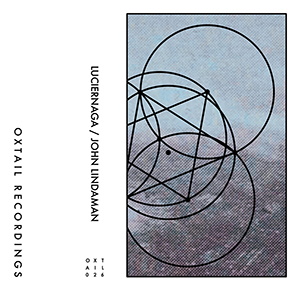 Both Joao Da Silva (Luciernaga) and John Lindaman utilize primarily a guitar to create expansive, occasionally difficult passages of abstract sound and noise, so pairing them together on this tape makes perfect sense. What becomes more striking by doing this, however, are their differences. With Luciernaga delivering a single live piece that is about an expansive sense of ambience, and a more free improv suite from Lindaman, both sides excel because of their differences, presenting two very different sides of a tried and true style.
Both Joao Da Silva (Luciernaga) and John Lindaman utilize primarily a guitar to create expansive, occasionally difficult passages of abstract sound and noise, so pairing them together on this tape makes perfect sense. What becomes more striking by doing this, however, are their differences. With Luciernaga delivering a single live piece that is about an expansive sense of ambience, and a more free improv suite from Lindaman, both sides excel because of their differences, presenting two very different sides of a tried and true style.
Da Silva’s half, "Hesitation Blues Revisited," is a performance recorded live in late 2016.The bit of opening pre-performance chatter makes the context in which it was recorded clear, as he begins to weave together simple guitar strums and ebow-like sustained drones together, making for a nice pattern of swells and open spaces.With a more gentle, ambient loop in the background, Da Silva adds in the occasionally harsher outburst or more distorted sound to the mix.As he continues though, he keeps that balance between peaceful space and harsher outbursts exceptionally well executed.
Some more specific sounds do appear, such as the taut string plucks near the bridge of his guitar, and the occasionally chirping bird like effect.Eventually he coaxes out everything from trilling horror film score notes to bent whale song like slides, all the while layering loops atop one another.The performance eventually builds to a droning wall of sound, and after a bit of taped voice, becomes a wonderful dull roar that suddenly ends and concludes the captivating performance.
Lindman’s half the tape is a studio session, split into four distinct songs instead of the lengthy half-hour performance by Luciernaga.The opening moments of "Civil Twilight" are rather conventional at first:clean, distinct guitar sounds and tone.The tone is affected soon by unconventional uses of delay and echo that pull the piece in an entirely different direction.Eventually he builds into layers of feedback and distortion, making for a piece that just straddles the line between music and noise, before drifting away peacefully."Crimson Sphere" follows a similar structure, with Lindaman beginning with traditional sounding guitar before slowly pulling it down into darker, more disturbing worlds.
"Eternal Black Hatred" is a more uncomfortable work.The clipped notes make for an unsettling sound right from the start, but with frequent use of reverb and distortion, it quickly becomes bleaker.Lindaman’s side ends on an especially strong note with "Noise of Palace."Starting from a simple clean note progression, some more low frequency elements are brought in, then the guitar is expanded into more of a shimmering wall of sound.Once all the pieces are in place it becomes a rather pleasant bit of droning effects.
The paring of these two artists is an excellent one, because the differences between the two are stark.Luciernaga's lengthy, public workout of slowly built sounds is nicely balanced by John Lindaman's shorter, more immediate pieces with a bedroom recording-like intimacy.As a combined release it provides excellent examples of just how different two artists doing "experimental ambient guitar" can be from one another, yet both doing exceptionally strong works.
samples:
 
Read More
- Administrator
- Albums and Singles
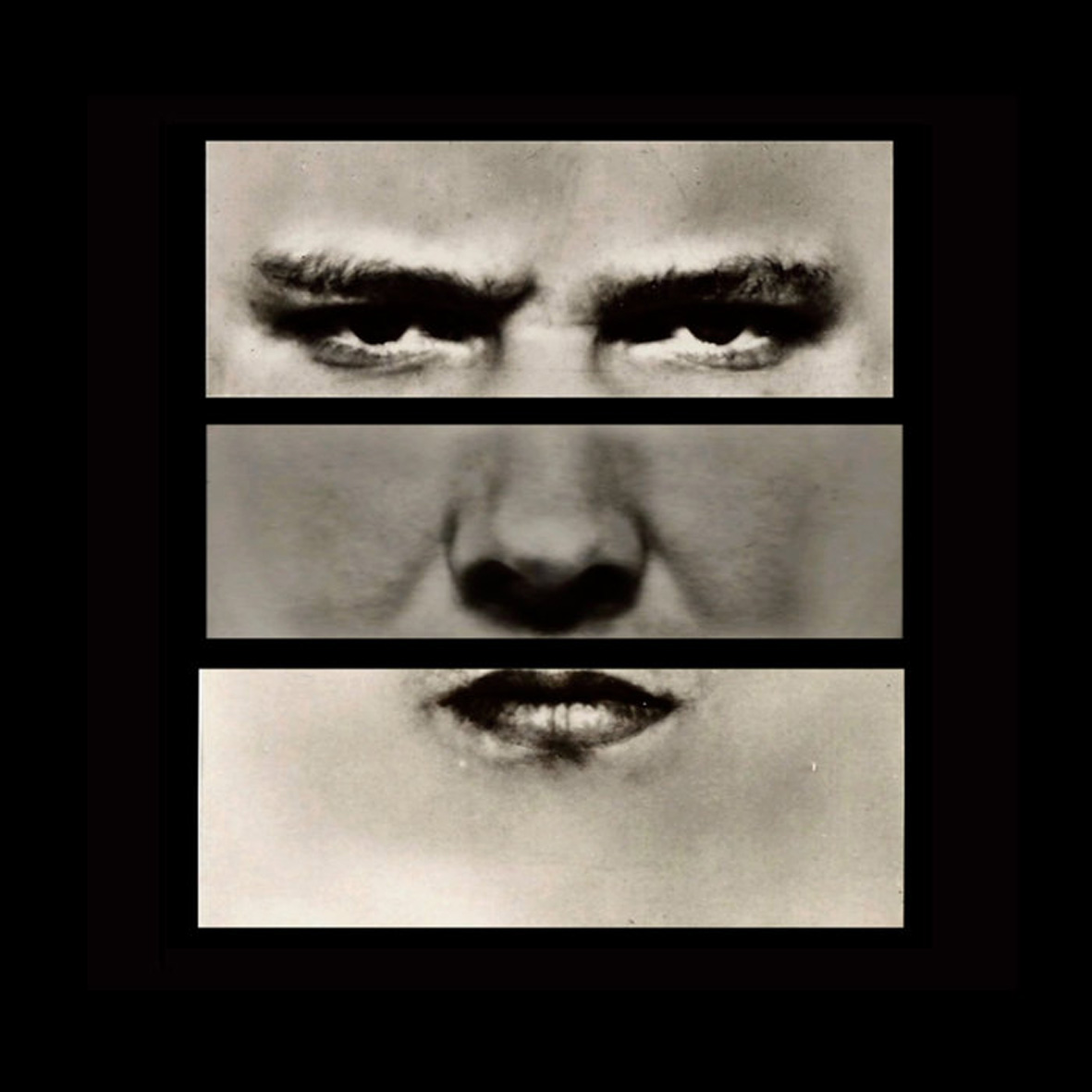
After a bit of a lengthy hiatus, Jack Dangers has returned with quite a bombshell of a new Meat Beat album. Self-described as resembling "an MC Escher optical illusion that spirals around and around and never seems to end," Impossible Star feels like a deep and hallucinatory plunge into a dance club in a dread-filled, dystopian near-future. Everything I would expect from a new Meat Beat album is certainly present (vocoders, cool samples, infectious grooves, deep bass, vintage synths, etc.), yet Impossible Star feels like a large and unexpected leap forward. While Dangers has historically always been near the vanguard of fresh evolutions in dance and electronic music, this album is perversely backward-looking in a way, seamlessly synthesizing the best of MBM's previous directions into something fresh like a post-industrial magpie. As a result, Impossible Star does not feel like a definitive (and unavoidably ephemeral) representation of electronic music in 2018 so much as it feel like something much more ageless, prophetic, and deliciously warped.
The brooding and claustrophobic opening piece, "ONE," is not a particularly representative glimpse of what is to come stylistically, yet it is perfect for establishing the disorienting and unnerving mood of the album: eerie synths ripple, shimmer, and dissonantly blur together and a cold, indistinct female voice appears that sounds like a looped intercom message reverberating through an abandoned concrete edifice.It feels like reality itself is evaporating into a deeply alienating and lonely dream.The following "Bass Playa" does not dispel that feeling of inhumanity and isolation much, but the sickly and skittering jazz-inflected groove that kicks in at least signals that the album has begun in earnest.It is not until the next piece ("We Are Surrounded"), however, that it becomes clear that Dangers has some truly inspired new material to share.I hate to compare Dangers to anyone, but "Surrounded" unavoidably calls to mind the thrill of classic Aphex Twin, as it mingles a wonderfully erratic, jabbering, and squiggling synth motif with a propulsive groove and a queasily uncomfortable progression of blurred chords.It instantly became my favorite song on the album, as the sputtering derangement of the synth "melody" is wonderfully unsettling, unpredictable, and visceral.Eventually, the groove collapses into an outro that sounds like a confused and gibbering computer alone in an abandoned control room.That outro illustrates the evocative and unusual sequencing that pervades Impossible Star, as it is strewn with a handful of dazzling and elaborate set pieces separated by interludes of bleak atmosphere (or interrupted by distorted rogue transmissions).
Aside from being one of the album’s best pieces, "Surrounded" also marks the beginning of an extended hot streak that consumes roughly the entire middle section of the album, as what follows is a feast of wonderfully squirming and burbling synths; robotic voice commands; blearily surreal smears of chords; eclectic samples; and relentless forward motion. As much as I love some of the beats and hooks, however, the true brilliance of Impossible Star lies in Dangers' skill as a producer, as he seamlessly juxtaposes textures and motifs to weave something that is both bracingly physical and a bit of an unreal mindfuck.Hallucinatory and disorienting textures and motifs are a bit of an obsession with me, but this album hits a sickly, feverish and vaguely curdled tone that I rarely encounter.Also, that lingering sense of disquiet and wrongness is rarely the focal point, instead existing as an omnipresent background haze to the sharply realized and dynamic grooves and vocoder hooks that consume the foreground.It is a delicate balancing act and Dangers handles it masterfully.
Also, aside from the more nuanced and detailed touches, there are some wonderfully overt feats of visionary sound design to be found as well.Naturally, the vibrantly squelching and jabbering synth hook of "We Are Surrounded" is one such highlight, but there are plenty of others.I especially enjoyed the brutally grinding high-hats that hit during the crescendo of "Unique Boutique," as well as the relentlessly scraping, crunching heaviness of the beat in "Nereus Rov."Also of note is the album’s 15-minute centerpiece, "Lurker," which is a tour de force of something resembling bleary and drugged robot funk.It sounds like a grotesque parody of a motorik groove, like some sort of futurist Neu! pastiche playing at the wrong speed on a distressed tape as I lose consciousness and plow my car into a tree.On the other end of the spectrum lies another aberration in the form of "T.M.I.," a lazily bouncing and rolling "pop song" of sorts.Again, however, something is slightly off, like a phrase that has been translated and re-translated across several languages.Or like a song that has been covered so much that it has lost its connection to the original piece (in fact, it sounds like Wire tried to mimic the sultry and languorous pop of Sade…and then a precocious robot tried to mimic that).
Dangers has appropriately achieved something with Impossible Star that should seemingly not be possible: evoking a paranoid, technological nightmare that is also a great headphone album masquerading as dance music.There is a depth and complexity at play that is quite compelling, yet it does not interfere all that much with the forward momentum of the beats.At its core, Star feels like a very crisp, precise, and expert trip through the last several decades of beat-driven electronic music that is competing with intermittent swells of loud ambient music or sound art happening in a neighboring room.Rather than sounding chaotic or messy, however, it sounds artfully disorienting–like it is meant to be there, but is just out of phase or slightly out of tune.That is not Dangers’ only trick though, as even his more straightforward motifs often have an element of funhouse-like disorientation to them: bass notes linger too long, textures are strangely corroded, and melodies feel too chromatic or random (like a code that got garbled by a virus).And sometimes it feels like the acoustics of Dangers’ studio were designed by a deranged German Expressionist, as motifs sometimes snarl or swim together in unusual ways.As much as I enjoy such details and moments, the larger reward of Impossible Star is only revealed when it is contemplated as a whole, as Dangers has woven quite a rich and evocative world: amidst his technologic dystopia, there are blissful snatches of old film scores alluding to better times, as well is crackling short wave radio transmissions that hint at darker ones to come.As such, Impossible Star is more than a collection of strong new songs: this is Jack Dangers' Blade Runner (or possibly his Neuromancer).
 
Read More
- Administrator
- Albums and Singles

"The artist sometimes known as Huerco S. ushers a phase shift of sound to the shoegazing harmonic gauze of Make Me Know You Sweet, his immersive debut proper as Pendant. In this horizontal mode, Brian Leeds relays abstract stories from a headspace beyond the dance, placing his interests in the Romantic landscapes of JMW Turner, Robert Ashley’s avant-garde enigmas, and Indigenous North American philosophy at the service of a more expressive, oneiric sound that sub/consciously avoids the trapfalls of 'chillout' ambient cliché.
Across seven amorphous, texturally detailed tracks he establishes far reaching coordinates for both Pendant and the West Mineral label, which aims to release everything except the commonly accepted, traditional forms of late 20th/early 21st century dance music, while also representing the work of his inner circle of friends, producers, artists. In that that sense there’s a definite feeling of "no place like home" to his new work, but that home appears altered, much in the same way The Caretaker/Leyland Kirby deals with themes of memory and nostalgia.
It’s best described as mid-ground music, as opposed to the putative background purpose of ambient styles, or the upfront physicality of dance music. Rather, the sound billows and unfurls with a paradoxically static chaos, occupying and lurking a space between the eyes and ears in a way that’s not necessarily comforting, and feels to question the nature and relevance of ubiquitous pastoral, new age tropes in the modern era of uncertainty and disingenuity.
The results ponder an impressionistic, romantically ambiguous simulacra of reel life worries and anxiety, feeling at once dense and impending yet without centre. From the keening, 11 minute swell of "VVQ-SSJ" at the album’s prow, to the similar scope of its closer, Pendant presents an absorbing vessel for introspection, modulating the listener’s depth perception and moderating our intimacy with an elemental push and pull between the curdling, bittersweet froth of "BBN-UWZ," the dusky obfuscation of "IBX-BZC" and, in the supremely evocative play of phosphorescing light and seductive darkness in the mottled depths of "KVL-LWQ," which also benefits from additional production by Pontiac Streator.
Make Me Know You Sweet taps into a latent, esoteric vein of American spirituality that’s always been there, yet is only divined by those who remain open-minded to its effect."
–via Boomkat
More cryptic information can be found here.
Read More

